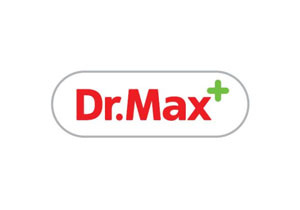Why not to miss the presentation?
The project that will radically change the character of eGovernment user; it will become a truly national matter. Introduction of electronic identification cards will enable mass distribution of electronic identification of citizens. It is therefore necessary to know how the ID will be prepared technically and how this project can deal with great variability of applications and software equipment of citizens. Michal Ševčík was a key person behind the success of some of the biggest electronic projects in Slovakia, e.g. National Schengen and Visa systems. Will eID project be likewise a success?
Executive Summary:
Since the beginning of december 2013 the electronic identification cards (eID) will be issued. The issuance of the eID cards is the part of a process of electronisation of the government. Through this electronisation, the services of government will be accessible over the internet via electronic eGovernemnt services. The eID card should be a trustworthy authentication device to enable citizens to access the eGovernment services. This card represents a secure device for storing the identification data of a citizen, in other words, electronic identification of the citizen. When does the eID card have a chance to succeed among the citizens? Its success in eGovernment depends on the accessibility of electronic services and their quality as well as on readiness of the infrastructure and the accessibility of software for the interaction with the eID card. The software for interaction with the eID card allows the citizen to authenticate and to use the eID card for the qualified electronic signature (QES). From the point of usability of the software that allows authentication using the eID card, the essential property is a platform independence. Citizens use various operating systems installed on their desktops and laptops and for the access to the internet they use various internet browsers. Beside this everyone may have a different software installed on his/her computer as well as the different controllers for the peripheral devices. The same thing regards the internet browsers that could have various configurations settings. That’s why there is a clear expectation the software that will be installed on a computer of a citizen and that will be a used to enable authentication using the eID card that it will be provided for the most commonly used operating systems (Windows, Linux, Mac) and that it will support the most commonly used internet browsers (Internet Explorer, Firefox, Chrome, Safari, Opera).
The project that will radically change the character of eGovernment user; it will become a truly national matter. Introduction of electronic identification cards will enable mass distribution of electronic identification of citizens. It is therefore necessary to know how the ID will be prepared technically and how this project can deal with great variability of applications and software equipment of citizens. Michal Ševčík was a key person behind the success of some of the biggest electronic projects in Slovakia, e.g. National Schengen and Visa systems. Will eID project be likewise a success?
Executive Summary:
Since the beginning of december 2013 the electronic identification cards (eID) will be issued. The issuance of the eID cards is the part of a process of electronisation of the government. Through this electronisation, the services of government will be accessible over the internet via electronic eGovernemnt services. The eID card should be a trustworthy authentication device to enable citizens to access the eGovernment services. This card represents a secure device for storing the identification data of a citizen, in other words, electronic identification of the citizen. When does the eID card have a chance to succeed among the citizens? Its success in eGovernment depends on the accessibility of electronic services and their quality as well as on readiness of the infrastructure and the accessibility of software for the interaction with the eID card. The software for interaction with the eID card allows the citizen to authenticate and to use the eID card for the qualified electronic signature (QES). From the point of usability of the software that allows authentication using the eID card, the essential property is a platform independence. Citizens use various operating systems installed on their desktops and laptops and for the access to the internet they use various internet browsers. Beside this everyone may have a different software installed on his/her computer as well as the different controllers for the peripheral devices. The same thing regards the internet browsers that could have various configurations settings. That’s why there is a clear expectation the software that will be installed on a computer of a citizen and that will be a used to enable authentication using the eID card that it will be provided for the most commonly used operating systems (Windows, Linux, Mac) and that it will support the most commonly used internet browsers (Internet Explorer, Firefox, Chrome, Safari, Opera).
Sign in to ITAPA Health&Care 2025
Michal Ševčík
Michal Sevcik obtained his Master's degree at the Slovak Technical University in Computer Science. After finishing his studies he started to gather his professional experience as a junior analyst working for Digital. Later he has gained experience and skills working on software development projects for key players in the financial and mortgage brokering market in New Zealand and Australia. Since his return to Slovakia in 2001 he has been working for Compaq and then Hewlett-Packard as a business analyst and solution architect using his experience and skills to analyze, design and implement complex IT projects and deliver system integration projects in the public sector. Since 2004 he was focusing mainly on the technologies and projects re…
See more info about the speaker




















